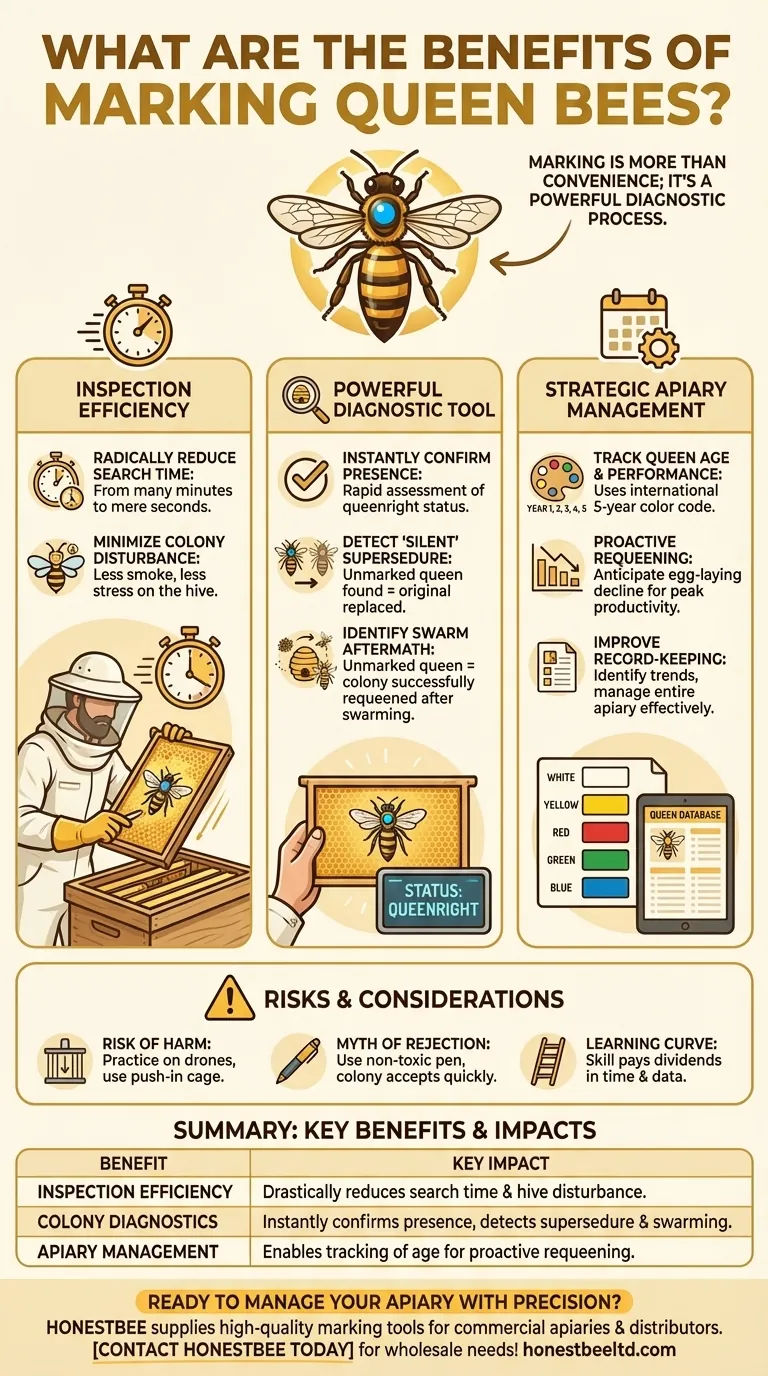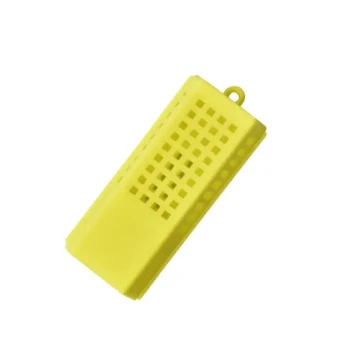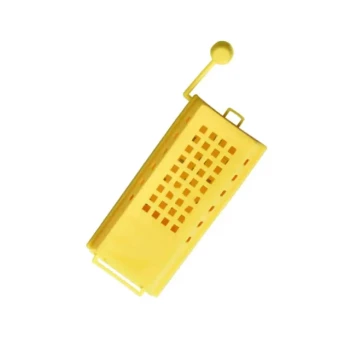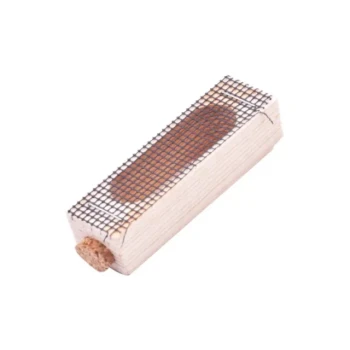In short, marking a queen bee makes her significantly easier to find during hive inspections, allows you to track her age, and provides definitive proof if the colony has replaced her. This simple act transforms a time-consuming search into a quick, data-rich assessment of your colony's status.
Marking a queen is not just about convenience; it's about converting your hive inspections from a simple search for an individual bee into a powerful diagnostic process. It provides immediate, actionable data on colony health, swarming events, and queen performance.
The Primary Driver: Inspection Efficiency
The most immediate benefit of marking a queen is the dramatic improvement it brings to your hive inspections. This efficiency has compounding positive effects on the colony.
Radically Reduce Search Time
A queen is just one bee among tens of thousands of her workers. A small, brightly colored dot on her thorax makes her stand out, often cutting the time it takes to find her from many minutes down to mere seconds.
Minimize Colony Disturbance
The longer a hive is open and manipulated, the more stressed the colony becomes. By finding the queen quickly, you can complete your inspection faster, using less smoke and causing less disruption to the hive's normal functions.
A Powerful Diagnostic Tool for Colony Events
A marked queen acts as a constant, reliable data point. Her presence—or absence—tells you a clear story about what has happened inside the hive between your inspections.
Instantly Confirm the Queen's Presence
Finding the marked queen quickly provides peace of mind, confirming the colony is queenright and healthy. This is the fastest way to assess the fundamental status of the hive.
Detect "Silent" Supersedure
Colonies will sometimes decide to replace an old, failing, or injured queen on their own in a process called supersedure. If you open a hive and find an unmarked queen, you know instantly that your original marked queen has been replaced.
Identify Swarm Aftermath
Similarly, if a colony swarms, the old (marked) queen leaves with the swarm. The remaining colony raises a new queen. Finding an unmarked queen after a swarm period confirms the colony has successfully requeened itself.
Strategic Apiary Management
Beyond single-hive diagnostics, marking is a cornerstone of effective, long-term apiary management. It enables proactive decision-making rather than reactive problem-solving.
Track Queen Age and Performance
Beekeepers use an international color code that rotates over five years to mark queens based on the year they were born or introduced. This system allows you to know a queen's age at a glance.
Because a queen's egg-laying productivity typically declines after two or three years, knowing her age helps you anticipate performance drops and decide when to requeen proactively to maintain a strong, productive colony.
Improve Your Record-Keeping
Consistent marking allows for more accurate and valuable data collection. Tracking the age, lineage, and replacement history of your queens helps you identify trends and make better management decisions across your entire apiary.
Understanding the Risks and Considerations
While the benefits are significant, marking is a skill that involves a small degree of risk that you must manage.
The Risk of Harming the Queen
Handling a queen always carries a slight risk of injury or accidental death. Beginners should practice on drones (male bees) first and use a safe tool like a push-in marking cage to immobilize the queen securely on a frame of honeycomb without direct handling.
The Myth of Rejection
A common concern is that the colony might reject a queen due to the paint. This is untrue, provided you use a specially designed, non-toxic queen marking pen. The bees quickly accept the marked queen, and it does not affect her mating flights or egg-laying behavior.
The Learning Curve
It takes practice to become calm and confident in finding, isolating, and marking a queen. The initial stress is normal, but the skill pays dividends in time saved and data gained over the lifetime of your beekeeping.
Making the Right Choice for Your Goal
Deciding to mark your queens depends on your objectives as a beekeeper.
- If your primary focus is learning and building confidence: Marking is an invaluable skill that makes inspections less intimidating and more educational.
- If your primary focus is maximizing honey production: Tracking queen age and performance is critical for knowing when to requeen to maintain vigorous, productive colonies.
- If your primary focus is swarm management and expansion: Marking is the most reliable way to confirm if a colony has swarmed and successfully raised a new queen.
Ultimately, marking transforms the queen from a mystery into a known asset, empowering you to manage your colonies with greater precision and confidence.
Summary Table:
| Benefit | Key Impact |
|---|---|
| Inspection Efficiency | Drastically reduces search time and minimizes hive disturbance. |
| Colony Diagnostics | Instantly confirms queen presence and detects supersedure or swarming events. |
| Apiary Management | Enables tracking of queen age and performance for proactive requeening. |
Ready to manage your apiary with precision?
HONESTBEE supplies commercial apiaries and beekeeping equipment distributors with the high-quality tools needed for successful queen marking and hive management. From durable push-in cages to safe, non-toxic queen marking pens, our wholesale-focused operations ensure you have the reliable equipment to boost your efficiency and colony health.
Contact HONESTBEE today to discuss your wholesale needs and elevate your beekeeping operations!
Visual Guide

Related Products
- Queen Bee Marking Pen UNI Medium Point for Queen and Bee Marking
- Queen Bee Marking Pen POSCA Queen Marking Pens for Beekeeping Bee Markers
- Queen Bee Marking Tube Cage Bottle Catcher Holder with Clear Plastic Plunger Marker
- Professional Engraved Round Hive Number Tags for Beekeeping
- Brown Nicot Queen Cell Cups for Breeding Queen Bees Beekeeping
People Also Ask
- What is the process for priming a paint pen before marking a Queen bee? Ensure a Safe, Quick Marking Procedure
- What are the color codes in the queen-marking system? Master Hive Management with the 5-Year Cycle
- How should a Posca pen be prepared for queen marking? Ensure a Safe, Precise Mark Every Time
- What type of markers are commonly used for marking Queen bees? Choose the Safe, Non-Toxic Standard
- What are the characteristics of Posca pens for marking queens? A Safe, Durable Solution for Hive Management



















